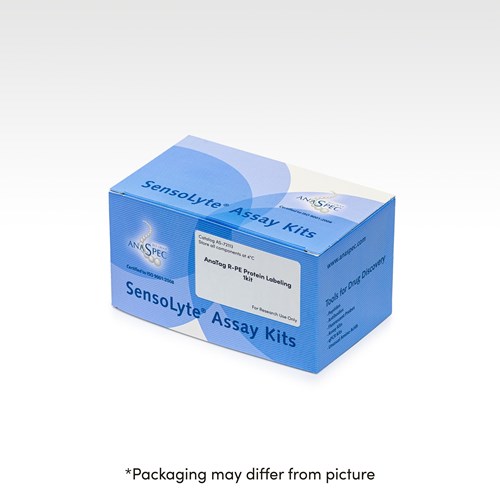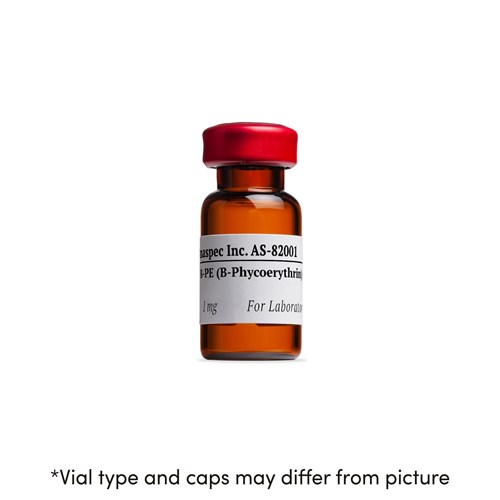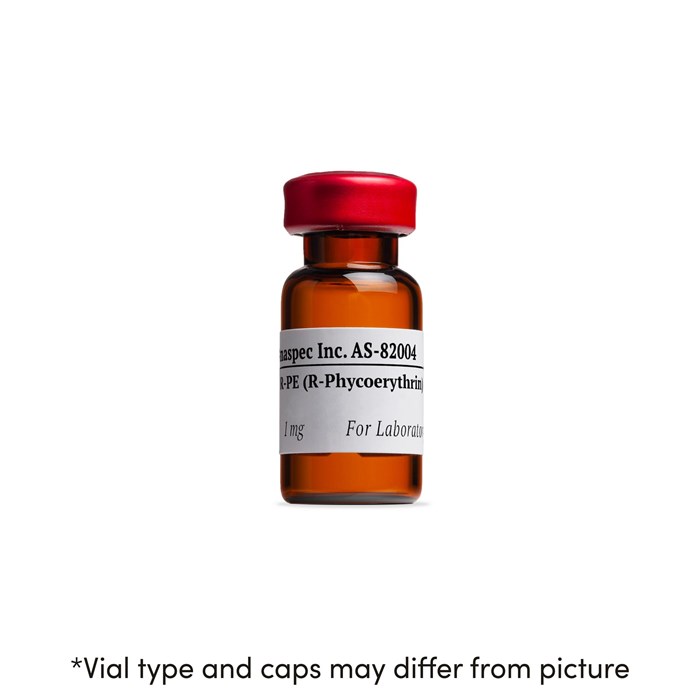-
You are here:
- Home
- Our catalog
- Products
- Labeling & detection
- Labeled proteins
- Red (620 -750 nm)
- R-PE (R-Phycoerythrin) - 1 mg
R-PE (R-Phycoerythrin) - 1 mg
- Cat.Number : AS-82004
- Manufacturer Ref. :
-
Availability :
In stockDelivery :Estimated restocking date :
- Shipping conditions : Ice delivery fees must be applied
Alternative choices
R-Phycoerythrin (R-PE), a fluorescent protein from phycobiliprotein family, is isolated from red algae. Its primary absorption peak is at 565 nm with secondary peaks at 496 and 545 nm. The broad excitation spectrum provides the advantage for multi-color immunofluorescent staining or cell sorting. R-PE consists of α, β and γ subunits and is present as (αβ)6γ. R-PE and the closely related B-PE are the most intensely fluorescent phycobiliproteins having orange fluorescence. They are significantly brighter and more photostable than conventional organic fluorophores.
Specifications
| Chemistry | |
| Molecular Mass/ Weight |
|
|---|---|
| Properties | |
| Absorbance (nm) |
|
| Emission (nm) |
|
| Color | |
| Storage & stability | |
| Form |
|
| Resuspension condition |
|
| Storage Buffer |
|
| Storage Conditions |
|
| Activity | |
| Application | |
| Biomarker Target | |
| Detection Method | |
| Research Area | |
| Sub-category Research Area | |
| Usage |
|
| Codes | |
| Code Nacres |
|
Downloads
You may also be interested in the following product(s)



Citations
AID-expressing germinal center B cells cluster normally within lymph node follicles in the absence of FDC-M1+ CD35+ follicular dendritic cells but dissipate prematurely.
J Innumol . 2013 Sep 25 ; 191(9) 4521 | DOI : 10.4049/jimmunol.1300769
- B. Boulianne
- et al
